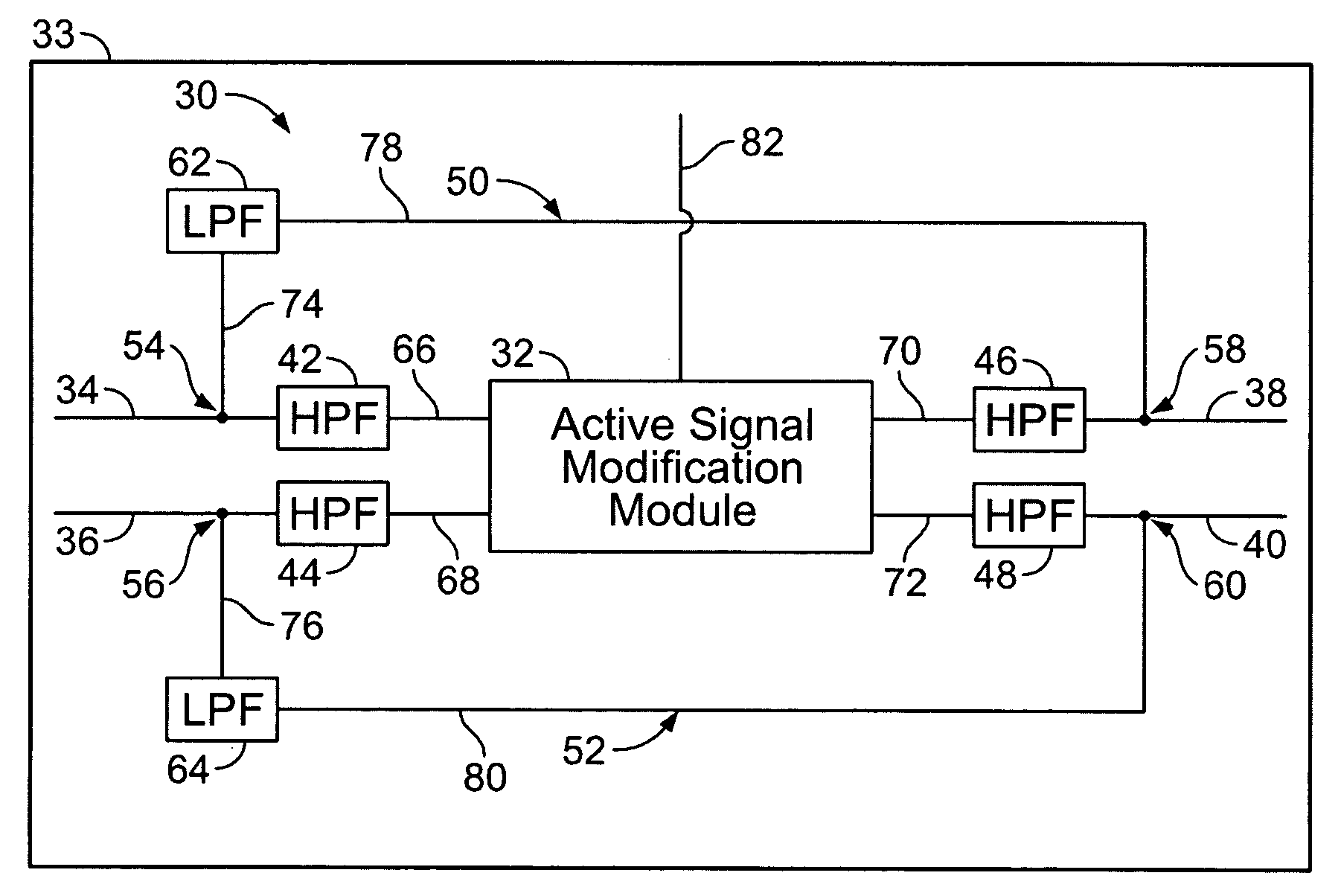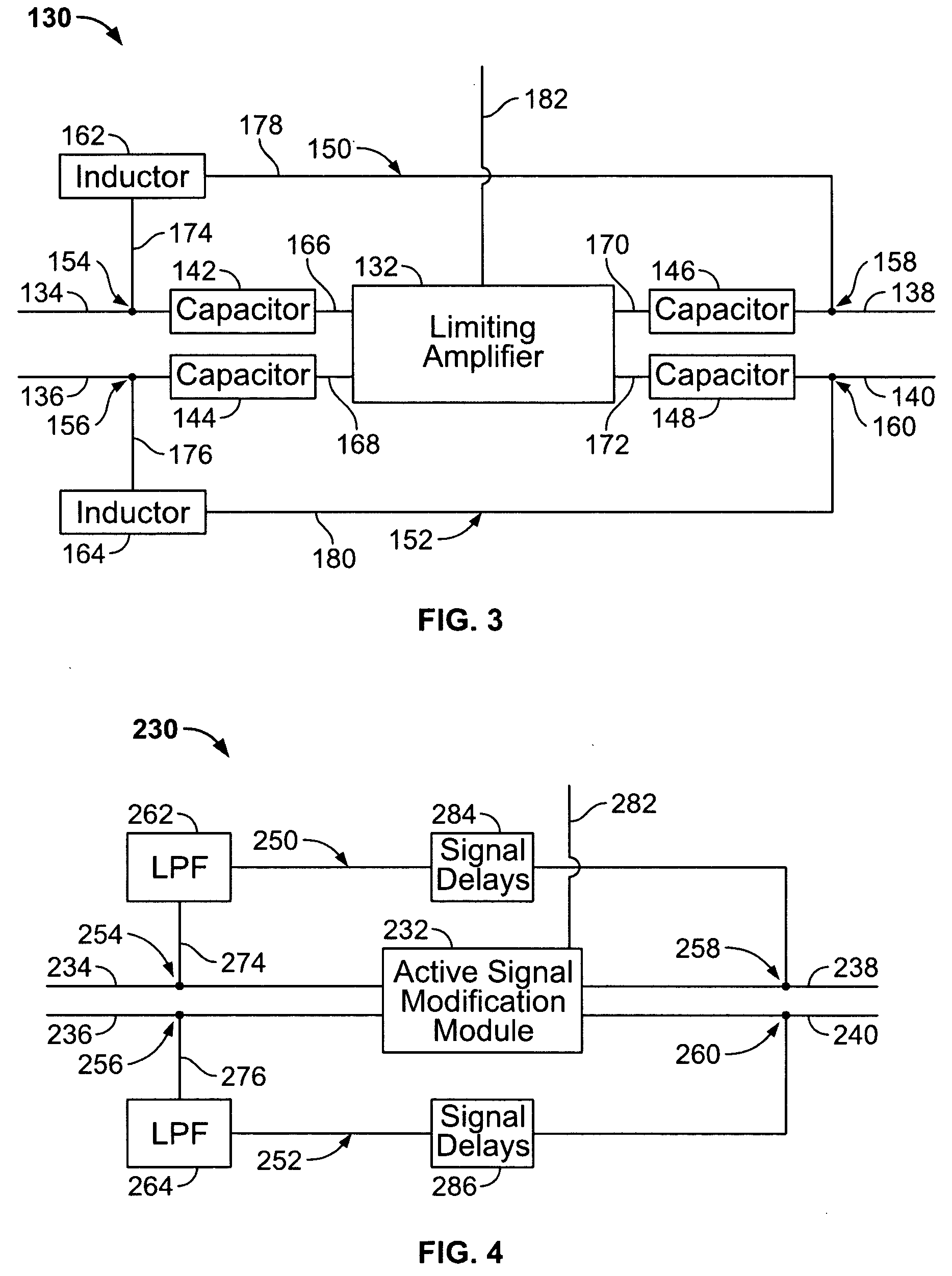Multi-mode signal modification circuit with common mode bypass
a signal modification circuit and common mode technology, applied in the direction of frequency-division multiplex, electric controllers, instruments, etc., can solve the problems of inability to convey both differential mode and common mode signals, cable assemblies that include active amplification components, and disadvantages of conventional passive equalization circuits
- Summary
- Abstract
- Description
- Claims
- Application Information
AI Technical Summary
Problems solved by technology
Method used
Image
Examples
Embodiment Construction
[0012]FIG. 2 illustrates an active bypass circuit 30 formed in accordance with an embodiment of the invention and may be used in a variety of applications. By way of example only, the active bypass circuit 30 may be joined to a transmission line or cable assembly 31 that is utilized to convey one or more of data signals, voice signals, power signals and the like. The cable assembly 31 may have any of several lengths, such as 10 meters, 25 meters, 50 meters and the like. As the length of the cable assembly 31 varies, the active bypass circuit 30 is adjusted accordingly to account for and correct changes in the electrical characteristics of the signals conveyed to and from the active bypass circuit 30. Examples of such electrical characteristics may include jitter, skew, attenuation, cross-talk and the like.
[0013] The active bypass circuit 30 includes an active signal modification module 32 that is joined with input lines 34 and 36 and with output lines 38 and 40. The active bypass c...
PUM
 Login to View More
Login to View More Abstract
Description
Claims
Application Information
 Login to View More
Login to View More - R&D
- Intellectual Property
- Life Sciences
- Materials
- Tech Scout
- Unparalleled Data Quality
- Higher Quality Content
- 60% Fewer Hallucinations
Browse by: Latest US Patents, China's latest patents, Technical Efficacy Thesaurus, Application Domain, Technology Topic, Popular Technical Reports.
© 2025 PatSnap. All rights reserved.Legal|Privacy policy|Modern Slavery Act Transparency Statement|Sitemap|About US| Contact US: help@patsnap.com



